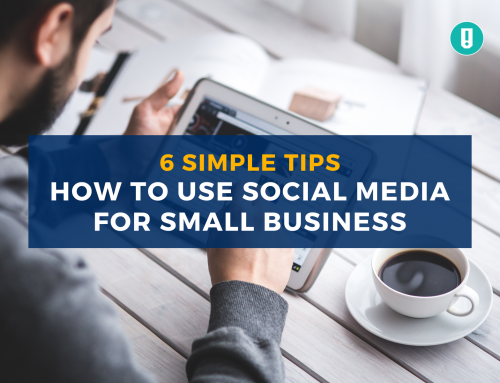According to the FBI’s 2019 Crime in the United States report, 62.8% of burglaries are residential. No wonder home security is one of the top priorities of any homeowner.
On the other hand, this could mean fierce competition among home security retailers. And this is where a robust digital marketing strategy could come in handy. Without it, your potential customers are less likely to know that your business exists.
This could lead to missed opportunities to generate sales.
In this post, we will share with you seven steps on how you can build an effective marketing plan for your home security company:
Step 1: Build a Marketing Plan
Your marketing strategy gives you an overview of what you want to achieve and how. In this case, your strategy might be to go digital since it is cost-effective.
On the other hand, your marketing plan details the specific actions you need to achieve your strategy.
For instance, your marketing plan would include the following:
- Search Engine Optimization
- Content Marketing
- Email Marketing
- Social Media Marketing
Regardless, it would be helpful if you document your plan. It is also imperative to include your marketing budget and the channels you will use.
To help you get started, we suggest using Hubspot’s marketing plan template.
Step 2: Create a Buyer Persona
Think of a buyer persona as an example of your ideal customer. Having one allows you to define your target customer in one sentence.
In the case of home security, your buyer persona could be newly-wed couples who need an affordable, quick-to-install, and easy to use home security system.
Having a buyer persona allows you to create a marketing campaign that will resonate with them. This ensures that whatever tactic you will use will be useful and bring in sales.
PRO TIP: You can create as many buyer personas as you can, depending on the product categories that you have.
Step 3: Identify Marketing Goals
Pushing through your marketing campaigns without a goal is like sailing without a map. Hence, it is imperative to have a marketing goal that coincides with your business goal.
For example, your business goal is to boost sales for your home security. Your marketing goal could be increasing your lead generation to 50%.
Another thing to keep in mind is that you should have SMART marketing goals.
Using our previous example, you can write your marketing goal like this:
Increase qualified leads generated through organic traffic by 50% within the next two months.
Step 4: Choose Your Marketing Tools
Once you have identified your marketing goals, the next step is to choose what tools you will need. These tools are meant to help you achieve your goals.
If you want to increase the number of leads you generate, that could mean you might need a Customer Relationship Management tool. That’s because a CRM tool allows you to capture and nurture leads, making it less cumbersome for you to convert them into paying customers.
Moreover, identifying what tools you will need allows you to figure out how much marketing budget you will need.
But keep in mind that there is no one perfect tool. That’s why we suggest that you pick the best tool that you can afford. It will also help if the tool you will use can integrate with your existing resources.
Step 5: Take Your Existing Resource Into Account
This is where you can reduce how much you will need to spend to implement your marketing campaign. Imagine the relief you can get, knowing that you no longer need to sign up for a new CRM tool since you already have one.
However, accounting for your existing resources is not limited to the tools you use.
You should also take into account your past and existing campaigns and what marketing channels were used. To make the process as straightforward as possible, we suggest you group your assets according to the following:
- These are any assets that you create. Some examples are your website and downloadable content.
- Earned assets are any user-generated content or channels that allow you to gain online visibility. A great example would be the mileage you get from your social media posts.
- Lastly, a paid asset is any marketing campaign that required payment to boost your business’s online visibility.
Identifying whatever resources you have, and knowing whether they brought you ROI or not, is a great way to mitigate your marketing expenses.
Step 6: Making it Happen
Of course, there is no sense in creating a robust marketing plan if you will not implement it.
It can be as simple as running a Google Ad campaign or as complex as sending an email to a group of website owners for a link building opportunity.
What’s important is that you have a structured timeline of what you intend to take action. Your marketing plan should also include who would be responsible for running a specific campaign. That way, you would know who should be made accountable.
We also suggest that you use a project management tool like Trello or Asana. That way, you can assign tasks, share documents, and monitor your team’s progress in one dashboard.
Step 7: Monitor and Measure Your Success
How would you know if your marketing campaign is effective? The answer is campaign monitoring.
Here’s the thing: Promoting your home security business requires money. Hence, it would only make sense to know whether your marketing campaign can bring in money.
After all, the reason you are promoting your business is to generate sales and revenue.
From Google Analytics to SimilarWeb, there are a plethora of tools that you can use to monitor and measure your digital marketing success.
Create a Marketing Plan That Works
Whether your home security business is new or has been in existence for years, it can benefit from digital marketing. It is just a matter of creating a robust marketing strategy.
If you do not know how to build one for yourself, we hope that this guide can kickstart your digital marketing campaign.
Juliette Anderson is an outreach community specialist for Alarm System Store an e-commerce store for home security systems and alarm com outdoor camera. When not at work, she’s busy watching “Organize With Me” videos on YouTube and enjoys outdoor with her little kid.






Leave A Comment